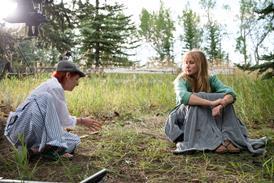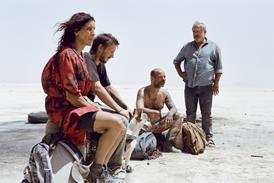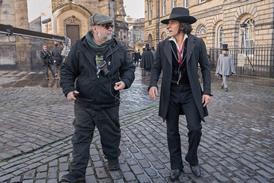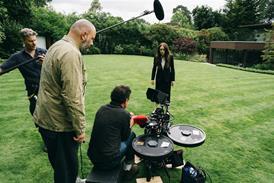Newcomer Julio Pena Fernandez plays the Spanish writer in packed historical epic
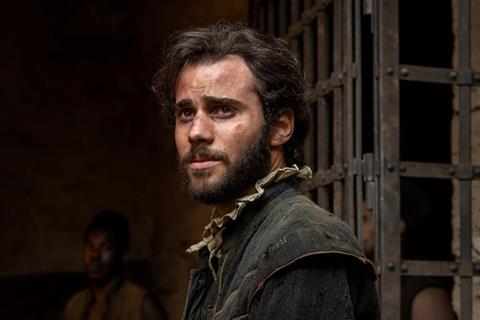
Dir/scr: Alejandro Amenabar. Spain/Italy. 2025. 134 mins.
An impressively ambitious take on the early life and blossoming imagination of Don Quixote author Miguel de Cervantes, Alejandro Amenabar’s Spanish and Arabic-language film The Captive nevertheless feels efficient and earnest rather than powerful. The latest from Chilean-Spanish director Amenabar, whose 2004 drama The Sea Inside won the Academy Award for best international feature film, seems weighed down by the responsibility of bringing Spain’s greatest writer to dramatic life while remaining faithful to the facts.
Weighed down by the responsibility of bringing Spain’s greatest writer to dramatic life
Amenabar’s previous historical films, including 2009’s Agora and 2019’s While at War, felt solidly rooted in the psychological complexity of their respective protagonists, but The Captive, which premiered at Toronto, proceeds from one set piece to another in the vein of standard historical fare – a failure of the very imagination it aims to celebrate. Yet, given the universal appeal of the subject and the film’s feelgood message, presales have been brisk, including a Disney pickup for Spain (where it opens on September 12), and other selected territories.
The setup is complicated but skilfully conveyed. From 1575-1580, young soldier and budding writer Cervantes (Julio Pena Fernandez), suffering from a permanently injured left arm since the Battle of Lepanto, is imprisoned in Algiers having been captured at sea by Ottoman corsairs. Inside the prison, with Christian inmates held by Muslim jailors, there’s an atmosphere of permanent tension and violence, including ear amputations and impalements. Freedom from captivity is only possible in three ways: ransom payments to the feared governor of Algiers, Hasan (Alessandro Borghi), shown living ostentatiously above the prison; conversion to Islam; or escape, which Cervantes attempts four times.
Taken under his wing by elderly priest and fellow writer Antonio de Sosa (Miguel Rellan), who is dedicating his life to recording the events unfolding within the prison, Cervantes falls in with other captives, including another priest, the righteous hypocrite Blanco de Paz (Fernando Tejero); Dorador (Luis Callejo), born a Muslim; and others the script spends less time developing.
Every year, a couple of so-called “redeemers”, lanky Fray Juan Gil (Cesar Sarachu) and round Fray Anton (Jorge Asin) pass by the prison with ransom money from the Spanish crown. They are unable to buy Cervantes’s freedom but it is clear that, in the aspiring author’s teeming imagination, they are the prototypes for Don Quixote and Sancho Panza, who became his best-known creations (and have been the subject of dozens of films – unlike their creator, who surprisingly has been the focus of just a handful, including Vincent Sherman’s 1967 biopic Cervantes.)
In part The Captive is about the power of the imagination as a form of escape from brutal reality. Cervantes finds he is able to hold the other hardened captives rapt with theatrically-told stories of their imaginary escape, stories which come to the attention of Hasan, a man who is both sexy and psychopathically sadistic.
Following their first meeting, Hasan permits Cervantes his freedom to explore Algiers until sunset which results in some of the film’s most visually-arresting scenes, heightened by their contrast to the predominantly prison-based action. Carefully staged for maximum exoticism rather than grimy realism, they depict teeming markets and colourful animals, and a visit by Cervantes to a bustling, backstreet barber’s shop, run by Abderraman (Roberto Alamo), that doubles as a den of iniquity.
As Cervantes captivates Hasan with stories in exchange for days of freedom, an increasingly steamy, Scheherazade-style flirtation unfolds between the pair. Amenabar’s take, including one scene depicting them naked together in a hammam, offers a fresh and, to some, provocative perspective on the real-life mystery of why Cervantes was finally released from prison in 1580 under less stringent conditions than normal. It is vital that Cervantes comes across as charismatic but also vulnerable and tortured, and relative unknown Pena Fernandez rises to the challenge well.
Inserted into the already busy narrative are several subplots (including one about Christian sympathiser Zoraida, played by Luna Berroa, in the film’s only female speaking role). Though Amenabar’s script works hard to marshall the vast amount of raw material available, the rapid shifts of scene and perspective lead to a loss of focus and a lack of subtlety in the character development.
It’s clear that Cervantes’ real passion is not for other people, but for the stories he tells – his memories of the windmills of his La Mancha boyhood are elegantly and poetically evoked – while the film’s key relationship between Cervantes and the governor, Amenabar’s one radical twist on the author’s story, never really takes flight. His Cervantes thus remains somewhat generic, never quite escaping the shackles of the universal ideals that the director has loaded him with – the great writer as a true citizen of the world, representative of the imagination as the place where social, religious and gender differences magically dissolve.
Production companies: MOD Producciones, Himenoptero, Misent Producciones, MOD Pictures, Propaganda Italia
International sales: Global Constellation
Producers: Fernando Bovaira, Alejandro Amenabar, Urko Errazquin, Simon de Santiago, Marina Marzotto, Mattia Oddone
Cinematography: Alex Catalan
Production design: Juan Pedro de Gaspar
Editing: Carolina Martinez Urbina
Music: Alejandro Amenabar
Main cast: Julio Pena Fernandez, Alessandro Borghi, Miguel Rellan, Fernando Tejero, Luis Callejo, Roberto Alamo








